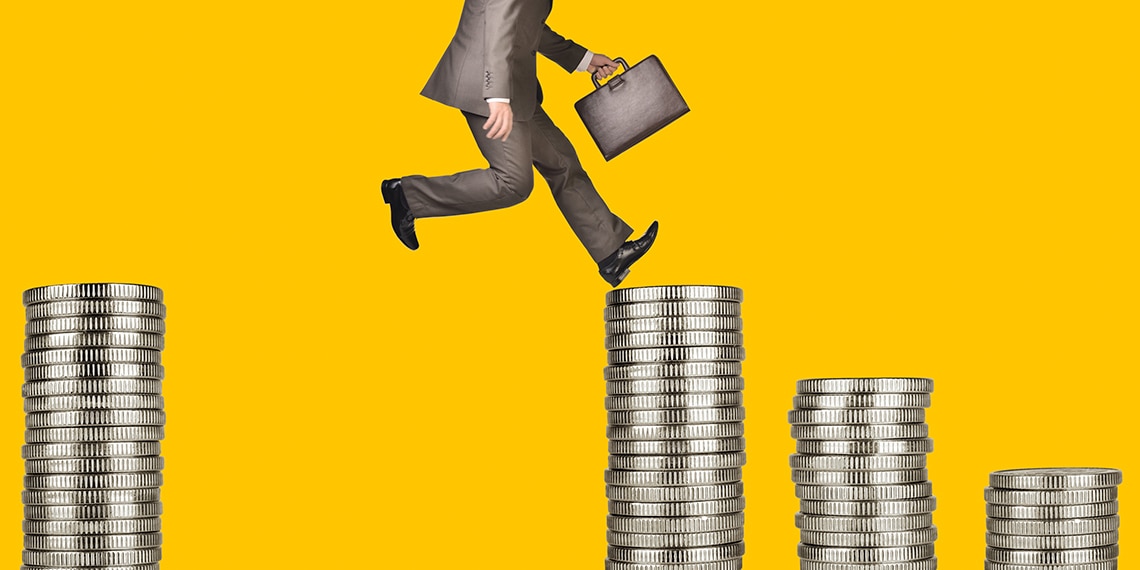
If you lost your job during the pandemic, you’re not alone: America has shed 8.4 million jobs over the past year.
But there’s sunshine on the horizon. The economy is not only waking up from its coronavirus-induced slumber, but furiously forging ahead. Some 900,000 jobs came back in March alone—twice as many as in February—and the unemployment rate keeps dropping. Want some more good news? Goldman Sachs is forecasting the U.S. economy to grow by a whopping 8% in 2021—the largest boom since the 1950s. It’s great news for anyone looking to get back into the workforce.
If you’re one of the lucky ones who recently returned to work, congrats! And if you’re out there searching for work, keep at it. After all, during your unemployment, you may have incurred some debt or dipped into your savings account (if not your emergency fund or retirement savings). A new gig offers the golden opportunity to get back on track to saving and paying down debt. Here’s how.
Build a New, Improved Budget
Start by reviewing where your budget is after your time off. To preserve cash during your unemployment, you likely took a hard look at your expenses and made some cutbacks. Perhaps you canceled subscriptions to publications you never read, streaming services you hardly watched or a gym you rarely went to. Ask yourself if you truly miss those things; if not, make the cutbacks permanent.
Remember that your new job will probably come with some additional costs. Will you need to buy home office supplies for working remotely, or will you start to have commuting costs? If you’ll be working outside the house, will you need childcare or a dog walker? Will you be making lunches or eating out? Does your new job come with free coffee? (Hey, it can be expensive!) And what about personal protective equipment? Estimate the cost of all these new expenses and add them to your budget.
To calculate your budget, figure out what your weekly or biweekly pay will be from your new job—and how much of it you want to save in a retirement plan or a rainy day fund. Then subtract your expenses, including debt payments (more on that below), and determine how much you’ll have left over for discretionary purchases.
Commit to what you put together. You’ve got your budget—now tell yourself you’ll stick to it!
Pay Down Your Debt
It’s totally understandable if you’ve accrued some debt over the course of your unemployment. Your new job should give you the chance to pay down that debt and help grow your overall savings.
Start by checking the terms of all your debts and focusing on those that carry the highest interest rates or least favorable terms. If your plastic helped keep you afloat while you were out of work, consider transferring those balances to a new credit card, which may come with a low (or $0) introductory rate. Then build a plan into your budget to pay that debt off or down before the rate jumps higher.
Even though your focus is on higher-interest debt, don’t neglect loans that come with a lower interest rate. Keep making payments for things like a mortgage, car or federal student loans. If it adds up to be too much, consider refinancing while interest rates remain low.
Shore Up Your Retirement Funds
Did you withdraw money from your 401(k) in 2020 under the CARES Act? If so, you got a break on the usual penalty for early withdrawal, but you still have to pay taxes on what you took out. The good news is that you can stretch those taxes out over the next three years. And here’s even better news: If you pay back the amount you took out within those three years, you can claim a refund on the taxes. So consider setting aside some money with that goal in mind.
If your new employer offers a 401(k), set up your account immediately and start automatically deducting some of your paycheck to fund it. Even if the amount you’re saving seems small, remember that it will compound over the long term. And if your employer also offers a matching program, be sure to save at least the percentage they’re matching—it’s free money!
Replenish Your Emergency Fund
If you took money from your emergency fund during your unemployment, well, that’s what it’s for! Now that you’re re-employed, take the opportunity to start building the stockpile back up.
Saving can be tough to do at the same time that you’re paying down debt, but try to set aside a little each paycheck. Need some incentive? Think about how grateful you were to have created this gift for your future self to get through the lean times. It’s a little treasure that may come in handy again—though hopefully not anytime soon.
Rich Beattie is a former executive digital editor of Travel + Leisure and has written for outlets such as The New York Times, Popular Science, New York Magazine and SKI.

